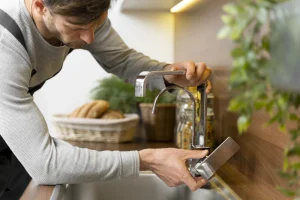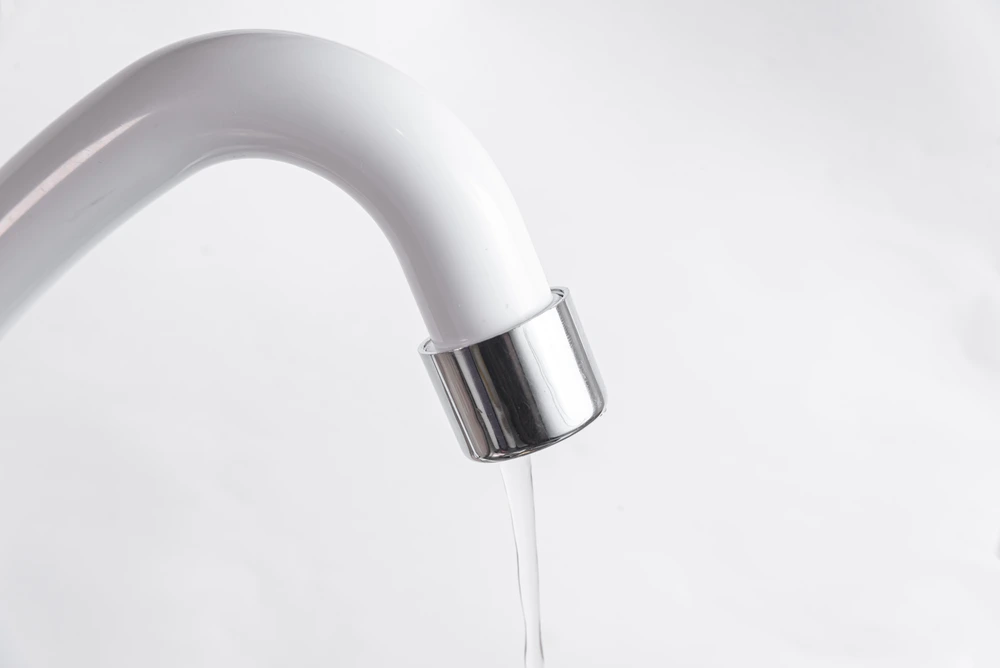A dripping tap may look harmless, but over time it can waste a surprising amount of water and money. Many homeowners dealing with leaking tap repairs in Canberra face the same dilemma: should they attempt a quick DIY fix or call in a licensed plumber? The answer isn’t always straightforward, and it often depends on the cause of the leak and your level of experience.
From worn washers to faulty O-rings, the reasons behind a dripping tap can vary. While some issues are simple enough to handle with a few basic tools, others require technical know-how and compliance with local plumbing standards. Knowing when to take matters into your own hands and when to rely on a professional can save you time, effort, and frustration.
This guide breaks down the essentials of leaking tap repairs Canberra residents should know, helping you decide the best approach for your home. Whether it’s preventing water wastage, avoiding costly damage, or ensuring long-term peace of mind, you’ll walk away with clear answers on how to deal with that persistent drip once and for all.
Common Causes of Leaking Taps
First, let’s diagnose the problem. Most tap leaks come down to a few classic causes:
- Worn washers or gaskets: Over time, the rubber washers inside compression taps get hard and cracked. Old and worn faucet washers and gaskets frequently cause leaks in faucets.
- Damaged O-rings: Inside the cartridge or ceramic taps, small O-rings seal the tap base. If these wear out or become dislodged, water can seep out at the base of the faucet.
- Corroded valve seats: The valve seat connects the faucet mechanism to the spout. Mineral build-up or corrosion can prevent a tight seal, causing drips when the tap is off.
- High water pressure: If your home’s water pressure is too high, it can force water through even small gaps, leading to persistent leaks.
- Loose parts: Sometimes the fix is as simple as tightening a loose screw or nut under the tap handle.
No matter where the leak shows up, kitchen tap, bathroom basin, laundry tub, the underlying issue is usually a tiny broken part or seal. To find the culprit, first inspect visible parts: check for drips around handles, spouts, and bases.
DIY Leaking Tap Repairs: What’s Involved
If you’re handy and comfortable with tools, a simple tap fix might be doable. DIY tap repair typically involves these steps:
Turn off the water supply: Under the sink or near the water meter, shut off the valves for that fixture.
Plug the drain: Stuff a cloth or stopper in the sink so small parts don’t fall down the drain.
Remove the tap handle: Depending on your tap type, this might involve unscrewing a cap and bolt. Keep track of any screws or caps.
Inspect the internals: Look for the worn part. In a compression tap, you’ll find a washer at the bottom of the stem; in a cartridge or ball tap, look for rubber seals or O-rings.
Replace the faulty part: Take the old washer/O-ring to a hardware store to match the size. Replace it and any corroded components.
Reassemble the tap: Put everything back together carefully, tightening screws snugly but not over-tightening plastic parts.
Test for leaks: Turn the water back on and check. If it’s still dripping, you might have missed something or need a new cartridge.
Many online tutorials and even local workshops (like council classes) teach these steps, because a lot of tap leaks are fixable with just basic tools and parts. Still, DIY repairs carry some risk. But for a visible, straightforward drip, a careful DIY job can save money.
DIY pros: Low material cost (washers are cheap), satisfaction of fixing it yourself, and immediate action.
DIY cons: Takes time and effort, risk of mistakes (stripped screw, cracked fitting, leftover leak).
Hiring a Professional Plumber
Sometimes, you just want it done right the first time. Calling in a professional plumbing service in Canberra means you get speed, skill, and often peace of mind. Here’s why a plumber can be a smart choice:
Experience and tools: Plumbers encounter all tap designs daily. They’ll quickly diagnose the cause and have the correct parts or a replacement cartridge on hand.
Guarantees: Most plumbers guarantee their work. If the tap leaks again, they’ll come back and fix it at no extra charge.
Safety and compliance: Licensed plumbers know local plumbing codes. ACT government guidance notes that for any plumbing repairs, you should get a licensed tradesperson to do the work. This is especially true in rentals or public housing, but it’s also best practice for homeowners.
Complex jobs: If your tap has an unusual design (cascading waterfall taps, integrated LED systems, etc.) or the leak has hidden origins, a pro will know how to fix it without collateral damage.
Emergency service: Many Canberra plumbers offer 24/7 call-outs. If a tap suddenly bursts or you have flooding, an emergency plumber can get there fast to shut things off and repair them immediately.

On the flip side, plumbers charge more. You’ll typically pay a call-out fee (maybe $80–$150) plus an hourly rate (around $100–$150/hr) and parts. But compare that to the potential cost of a flooded kitchen or warped cabinetry; sometimes a few hundred dollars is worth avoiding a disaster. And remember, each leaking tap wastes lots of water.
Choosing a plumbing service in Canberra is mostly about reputation and licensing. Look for ACT-licensed plumbers; Master Plumbers ACT is a good starting point. In short, when water is leaking, a trusted tradesperson might save you headaches.
| Aspect | DIY Fix | Professional Plumber |
| Cost | Only parts (washers, seals) – usually under $20. | Labor plus parts – higher upfront, but includes expertise. |
| Time | Time to research, get parts, and do work. | Fast diagnosis and fix; emergency service available. |
| Skill Level | Basic DIY skills and tools (wrenches, pliers) needed. | No skill required; plumber brings tools/parts. |
| Risk | Risk of error: possible leaks or damage if done wrong. | Low risk: work is insured and guaranteed. |
| Compliance | Must ensure correct reassembly and no building code issues. | Guaranteed compliance with plumbing regulations. |
Fixing the Leak: What to Expect
Whether DIY or pro, expect the following when you address your leaking tap:
Diagnosis: The core step is identifying the leaking part. A plumber might remove the entire cartridge for inspection, whereas you might first check the tap handle and spout for signs of wear.
Shutting off water: In either case, water is shut off. If you call a plumber, they will often shut off the water at your meter and verify no flow.
Repair steps:
DIY: You may replace just a single washer or O-ring. It’s often a 15–30 minute job once you have the right part. Common fix: swap in a new rubber washer or ceramic cartridge.
Professional: A plumber might do the same replacement or, if needed, install a new tap cartridge or even a new faucet altogether. They’ll also check for any damage (e.g., corrosion) and ensure seals are tightened to spec.
Testing: After repair, run both hot and cold water to ensure no more drips. Monitor for a few days.
Clean up: The plumber cleans up the mess. If you DIY, grab that bucket and towels!
A handy trick: always keep an old towel or bucket under the tap when you first turn the water back on, just in case there’s a small drip you missed.
Preventing Future Leaks
Even after fixing one leak, consider how to avoid the next one. Here are tips to protect your taps and water:
Regular checks: Inspect taps periodically. Read your meter at approximately the same time each month to track water use. If usage spikes, check for hidden drips.
Gentle use: Teach family members to turn taps off firmly but not with brute force. Rough handles strain the inner parts.
Quality fittings: When replacing taps or components, invest in good-quality parts. They last longer.
Pressure regulator: Have a plumber test your home’s water pressure. If it’s consistently over 500 kPa, a pressure-reducing valve can save your pipes and taps from stress.
Water-saving devices: Consider installing aerators or flow restrictors. Lower flow means that even if a tiny leak starts, it wastes less water.
By staying on top of these, you’ll likely postpone or avoid leaks altogether.
Conclusion
Leaking taps are one of those household issues that can’t be ignored for long. They not only waste water but also signal underlying wear and tear that may require attention. Throughout this guide, we’ve seen how some repairs are manageable with basic tools, while others demand the expertise of a licensed plumber in Canberra.
Understanding the common causes of dripping taps helps you decide whether a DIY repair is enough or if professional intervention is the safer option. Acting promptly prevents minor leaks from escalating into costly plumbing problems and ensures your home remains efficient and water-conscious.
When it comes to peace of mind, choosing expert help makes all the difference. At Capital Plumbing Specialists, we provide reliable leaking tap repairs, bathroom and kitchen tap solutions, and complete plumbing services across Canberra. Contact us today to book your service and let our experienced team fix your taps quickly and professionally.
FAQs:
-
Why choose professional leaking tap repairs in Canberra?
Local plumbers understand Canberra’s water systems and regulations. They ensure compliance, reliable repairs, and long-term solutions compared to quick DIY fixes.
-
How often should taps be serviced to prevent leaks?
Regular maintenance every 2–3 years, including checking washers, seals, and cartridges, can prevent most leaks and extend the lifespan of your taps.
-
Are emergency plumbing services necessary for a leaking tap?
Not always. A slow drip isn’t usually an emergency, but if the leak becomes a constant stream, won’t shut off, or risks water damage, calling an emergency plumber in Canberra is wise.


 About Us
About Us